January 20, 2014 – Day 14 has ended in Cabo San Lucas so to recap the last few day we start on our 2nd day in Loreto.

9:00 AM we were off to San Javier, water still running across vados on many sections of road. Princess Line Cruise Ship arrived in port carrying 3000 passengers, several large vans and taxis up at the San Javier Mission. Some folks purchased local fruit from a vendor at the 300 year old Olive tree, inexpensive and tasty. Back in town the streets were filled with tourists which lasted all day, definitely good for business and the local economy. Dropped by Kathy Hill’s tienda and met Lorri Winstanley and her husband Ed who have a Sailboat at Puerto Escondido. Back in the day Lorri and I worked on some political campaigns together.

We dropped by at Marv & Shel’s, only Marvin was home a Shelly was back in Vancouver visiting their daughter. Our Fiesta Night Dinner at the Giggling Dolphin was a real hit, Ubaldo is always a very gracious host and serves up a good meal. The musicians arrived at exactly the right time and put on a terrific performance which the gang thoroughly enjoyed. We also celebrated Paul 70th birthday, both in Spanish and English, this was fun. Later we took a short drive across the main arroyo and dropped over to the Loreto Shores which only has a few RV spaces left these days. We stopped at Dan & Gail’s who were home and said hi, all their renovations are now complete and they are well settled in for the winter.
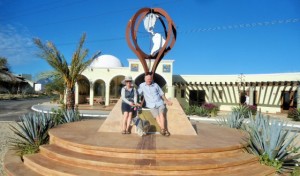
The next morning after singing Happy Birthday to Paul (on his actual birthday) we headed off to Constitucion under warm sunny skies, again the traffic was light and the drive was without incident. We stopped at the Super Ley as always for our big shop before hitting the beach and rolled into Palapa 206 about 2:00 PM. Nigel and Mike replaced my hitch pin for me on the equalizer bar, it was becoming very problematic always dropping out expectantly. Then we held a Birthday Happy Hour for Paul, everyone brought some snacks and Lisa made Summer Beer. We met Martin & Gail from Canmore, Alberta for the first time who were headed north so we invited them to the Happy Hour as well. Later we watched a movie, Mud starring with Matthew Mconehay, then I turned in.

8:00 AM Day 11 we departed for the beach on schedule without any fog which can be a problem at this location. The closer we got to La Paz the windier things got, definitely a harbinger of weather in our future. The road construction at KM 42 and again at the bottom of the hill had changed little since we left in December. I was alarmed to see no crews or equipment on site anywhere, accordingly the parallel construction roadway was in poor shape and the Mexican free for all in the construction zone operating as per usual.
Our fuel stop was a no go as they could not get the pumps working, so we headed to the beach. Lots of room on Playa Tecolote a few RVs at the east end of the beach and our usual camping location very available. The wind was when we arrived and stayed up the rest of the day. Unfortunately the next day more wind so we could not get the Kayak or Paddleboard off the roof, however it did brighten up. Our Quebec couples hiked up the bluff behind the beach, less than an hour each way. We had a terrific potluck on the beach and many more RVs arrived on Tecolote before the sun set, lots from Europe.

On Thursday, we headed off for Rancho Verde after a Chorus of Happy Birthday (the big 60) but first our stop at El Triunfo, including brunch at the Café El Triunfo. All started well then it became apparent our order got lost for five (5) of us including the birthday boy. We ordered at 10:20 AM and were fed after noon (ouch!). After we headed to Ranch Verde for the rest of the day as the skies cleared and wind faded. We met Bob and Maggie, who had a Brother and Sister in Law with us 2011 (Grant & Anita) who joined us for yet another birthday Happy Hour.
Bright and early we headed the next day for Los Cabos, not a cloud in the sky and warming up fast (23C at 9:35 am). Great stop at the Tropic of Cancer monument, quick stop to refill on the propane, then off to Walmart at the Plaza San Lucas. We arrived at the park about 1:20 pm and headed out on our Cabo excursion an hour later. Mike & Judy joined us for dinner at Vags, as did our friends Veronica & Rick and Peter & Geraldine at Vags (now JP’s) Restaurant, which Peter is a co-owner
Great food, terrific company, wonderful atmosphere, chocolate Birthday Cake to boot, definitely a night to remember.

This morning (Day 15) we head off to Artizano’s and San Jose Del Cabo.

Did you know?
The “Mexican National Anthem” (Spanish: Himno Nacional Mexicano), also known as “Mexicans, at the cry of war” (Spanish: Mexicanos, al grito de guerra), is the national anthem of the United Mexican States. The anthem first started being used in 1854, although it was not officially adopted de jure until 1943. The lyrics of the national anthem, which allude to historical Mexican military victories in the heat of battle and including cries of defending the homeland, were composed by poet Francisco González Bocanegra after a Federal contest in 1853. Later in 1854 he asked, Jaime Nunó to compose the music which now accompanies González’s poem. The anthem, consisting of ten stanzas and a chorus, effectively entered into use on September 16, 1854.
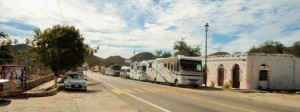
On November 12, 1853, President Antonio López de Santa Anna announced a competition to write a national anthem for Mexico. The competition offered a prize for the best poetic composition representing patriotic ideals. Francisco González Bocanegra, a talented poet, was not interested in participating in the competition. He argued that writing love poems involved very different skills from the ones required to write a national anthem. His fiancée, Guadalupe González Del Pino (or Pili), had undaunted faith in her fiancé’s poetic skills and was displeased with his constant refusal to participate in spite of her constant prodding and requests from their friends. Under false pretenses, she lured him to a secluded bedroom in her parents’ house, locked him into the room, and refused to let him out until he produced an entry for the competition. Inside the room in which he was temporarily imprisoned were pictures depicting various events in Mexican history which helped to inspire his work. After four hours of fluent (albeit forced) inspiration, Francisco regained his freedom by slipping all ten verses of his creation under the door. After Francisco received approval from his fiancée and her father, he submitted the poem and won the competition by unanimous vote. González was announced the winner in the publication Official Journal of the Federation (DOF) on February 3, 1854.

A musical composition was chosen at the same time as the lyrics. The winner was Juan Bottesini, but his entry was disliked due to aesthetics. This rejection caused a second national contest to find music for the lyrics. At the end of the second contest, the music that was chosen for González’s lyrics was composed by Jaime Nunó, a Spanish-born band leader. At the time of the second anthem competition, Nunó was the leader of several Mexican military bands. He had been invited to direct these bands by President Santa Anna, whom he had met in Cuba. About the time that Nunó first came to Mexico to start performing with the bands, Santa Anna was making his announcement about creating a national anthem for Mexico. Out of the few musical compositions submitted, Nunó’s music, titled “God and Freedom” (Dios y libertad), was chosen as the winner on August 12, 1854. The anthem was officially adopted on Independence Day, September 16 of that same year. The inaugural performance was directed by Juan Bottesini, sung by soprano Claudia Florenti and tenor Lorenzo Salvi at the Santa Anna Theatre (now known as the National Theatre of Mexico). The theater by the way was an impressive construction of President Santa Ana in a previous term in office. Built on the scale of great European opera houses it remained an impressive piece of architecture until its demolition in 1901.

Officially since 1943, the full national anthem consists of the chorus, 1st stanza, 5th stanza, 6th stanza and 10th stanza. The modification of the lyrics was ordered by President Manuel Ávila Camacho in a decree printed in the Diario Oficial de la Federación. When the anthem is played at sporting events, such as the Olympic Games and the FIFA World Cup, the only parts of the anthem that are played are the chorus, 1st stanza and the chorus. When opening and closing television and or radio programming, stations have sometimes played a modified national anthem consisting of the chorus, 1st stanza, chorus, 10th stanza and chorus.
Coro:
Mexicanos, al grito de guerra el acero aprestad y el bridón. Y retiemble en sus centros la Tierra, al sonoro rugir del cañón. Y retiemble en sus centros la Tierra, al sonoro rugir del cañón! Chorus:[3]
Mexicans, at the cry of war make ready the steel and the bridle, and may the Earth tremble at its centers at the resounding roar of the cannon. And may the Earth tremble at its centers at the resounding roar of the cannon!
Strofa I:
Ciña ¡oh Patria! tus sienes de oliva de la paz el arcángel divino, que en el cielo tu eterno destino por el dedo de Dios se escribió. Mas si osare un extraño enemigo profanar con su planta tu suelo, piensa ¡oh Patria querida! que el cielo un soldado en cada hijo te dio. First Stanza:
Let gird, oh Fatherland! Your brow with olive by the divine archangel of peace, for in heaven your eternal destiny was written by the finger of God. But if some enemy outlander should dare to profane your ground with his sole, think, oh beloved Fatherland! That heaven has given you a soldier in every son.
Estrofa V:
¡Guerra, guerra sin tregua al que intente De la patria manchar los blasones! ¡Guerra, guerra! Los patrios pendones En las olas de sangre empapad. ¡Guerra, guerra! En el monte, en el valle Los cañones horrísonos truenen, Y los ecos sonoros resuenen Con las voces de ¡Unión! ¡Libertad! Stanza V:
War, war without quarter to any who dare to tarnish the coats of arms of the country! War, war! Let the national banners be soaked in waves of blood. War, war! In the mountain, in the valley, let the cannons thunder in horrid unison and may the sonorous echoes resound with cries of Union! Liberty!
Estrofa VI:
Antes, patria, que inermes tus hijos. Bajo el yugo su cuello dobleguen, Tus campiñas con sangre se rieguen, Sobre sangre se estampe su pie. Y tus templos, palacios y torres Se derrumben con hórrido estruendo, Y sus ruinas existan diciendo: De mil héroes la patria aquí fue. Stanza VI:
O, Fatherland, ere your children, defenseless bend their neck beneath the yoke, may your fields be watered with blood, may their foot be printed in blood. And may your temples, palaces and towers collapse with horrid clamor, and may their ruins continue on, saying: Of one thousand heroes, here the Fatherland began.
Estrofa X:
¡Patria! ¡Patria! Tus hijos te juran Exhalar en tus aras su aliento, Si el clarín con su bélico acento los convoca a lidiar con valor. ¡Para ti las guirnaldas de oliva! ¡Un recuerdo para ellos de gloria! ¡Un laurel para ti de victoria! ¡Un sepulcro para ellos de honor! Stanza X:
Fatherland! Fatherland! Your children swear to you to breathe their last for your sake, if the bugle with its bellicose accent calls them together to battle with courage. For you, olive wreathes! A memory for them of glory! For you, a laurel of victory! A tomb for them of honor!

An urban legend about the copyright status of the anthem states that years after its first performance, family sold the musical rights to a German music publishing company named Wagner House. Originally, Nunó was supposed to have turned the music rights over to the state in exchange for a prize from the Mexican government. However, according to the myth, the copyright changed hands again, this time to Nunó himself and two Americans, Harry Henneman and Phil Hill.

In reality, however, this is not correct. It is true that Nunó, Henneman and Hill did register the music with the company BMI (BMI Work #568879), with the Edward B. Marks Music Company as the listed publisher of the anthem. This might be the version that some have suggested is copyrighted in the United States. However, United States copyright law declares the Mexican anthem to be in the public domain inside the United States, since both the lyrics and music were published before 1909. Furthermore, under Mexican copyright law, Article 155 states that the government holds moral rights, but not property rights, of the national symbols, including the anthem, coat of arms and the national flag.
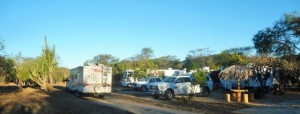
National regulations
In the second chapter of the Law on the National Arms, Flag, and Anthem (Ley sobre el Escudo, la Bandera y el Himno Nacionales), the national anthem is described in very brief terms. While Articles 2 and 3 discuss in detail the coat of arms and the flag, respectively, Article 4 mentions only that the national anthem will be designated by law. Article 4 also mentions that a copy of the lyrics and the musical notation will be kept at two locations, the General National Archive and at the National Library, located in the National Museum of History (Biblioteca Nacional en el Museo Nacional de Historia).

Chapter 5 of the Law goes into more detail about how to honor, respect and properly perform the national anthem. Article 38 states that the singing, playing, reproduction and circulation of the national anthem are regulated by law and that any interpretation of the anthem must be performed in a “respectful way and in a scope that allows [one] to observe the due solemnity” of the anthem. Article 39 prohibits the anthem from being altered in any fashion, prohibits it from being sung for commercial or promotional purposes, and also disallows the singing or playing of national anthems from other nations, unless you have permission from the Secretary of the Interior (Secretaría de Gobernación) and the diplomatic official from the nation in question. The Secretary of the Interior and the Secretary of Public Education (Secretaría de Educación Pública), in Article 40, must grant permission for all reproductions of the national anthem to be produced, unless the anthem is being played during official ceremonies carried on the radio or television. Article 41 states that the national anthem is required to be played at the beginning or end of radio and television programming. The extra requirement for television programming is that photos of the Mexican flag must be displayed at the same time the anthem is playing. Article 42 states that the anthem may only be used during the following occasions: solemn acts of official, civic, cultural, scholastic or sport character. The anthem can also be played to render honors to the Mexican flag and to the President of Mexico. If the national anthem is being used to honor the national flag or the President, the short version of the anthem is played. Article 43 says that special musical honors may be paid to the President and the flag, but no more than once during the same ceremony. Article 44 says that during solemn occasions, if a choir is singing the anthem, the military bands will keep silent. Article 45 says that those who are watching the national anthem performance must stand at attention (firmes) and remove any headgear. Article 46 states that the national anthem must be taught to children who are attending primary or secondary school; this article was amended in 2005 to add pre-school to the list. The article also states that each school in the National Education System (Sistema Educativo Nacional) will be asked to sing the national anthem each year. Article 47 states that in an official ceremony in which is need to play another anthem, the Mexican anthem will be played first, then the guest’s anthem. Article 48 states that at embassies and consulates of Mexico, the national anthem is played at ceremonies of a solemn nature that involves the Mexican people. If the anthem is played outside of Mexico, Article 48 requires that the Secretary of External Relations (Secretaría de Relaciones Exteriores), through proper channels, must grant permission for the national anthem to be played and will also ensure that the anthem is not sung for commercial purposes.
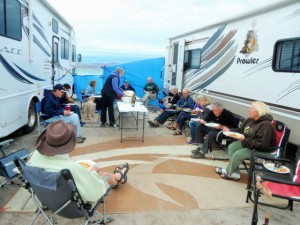
What is important to remember is at the time the anthem was written, Mexico was still facing the effects of a bitter defeat in the Mexican-American War at the hands of the United States. The country felt demoralized and also divided, due to the cession of more than half of its territory due to its defeat to the United States. According to historian Javier Garciadiego, who spoke at a 2004 ceremony commemorating the 150th anniversary of the anthem’s adoption, the anthem disregards divisions and strife and encourages national unity. On that same date, Mexico City and other parts of the country stopped what they were doing and performed a nationwide singing of the anthem. Individuals from other nations participated, mostly at diplomatic offices or at locations where a high concentration of Mexican expatriates are found. The anthem has also been described as one of the symbols of the “Mexican identity”.

On the rare occasions when someone performs the anthem incorrectly, the federal government has been known to impose penalties to maintain the “dignity” of the national symbols. One example is when a performer forgot some of the lyrics at a soccer match in Guadalajara, she was fined 400 MXN by the Interior Ministry and released an apology letter to the country through the Interior Ministry. In addition, the anthem is sometimes used as a tool against people who might not be “true Mexicans”. In one case, a young man of Afro-Mexican descent was stopped by police and forced to sing the anthem to prove his nationality. In a separate incident in Japan, police officers asked four men to sing the Mexican anthem after they were arrested in Tokyo on charges of breaking and entering. However, when the men could not sing the anthem, it was discovered that they were Colombian nationals holding forged Mexican passports. They were later charged with more counts on theft of merchandise and money.

Other languages
Though the de facto language of Mexico is Spanish there are still people who only speak indigenous languages. On December 8, 2005, Article 39 of the national symbols law was adopted to allow for the translation of the lyrics into the native languages. The official translation is performed by the National Institute of Indigenous Languages (Instituto Nacional de Lenguas Indígenas). Officially, the national anthem has been translated into the following native languages: Chinanteco, Hña Hñu, Mixteco, Maya, Nahuatl and Tenek. Other native groups have translated the anthem into their respective language, but it has not been sanctioned by the Government.


